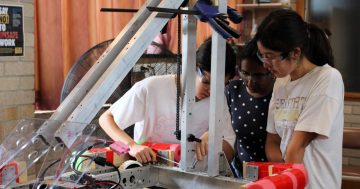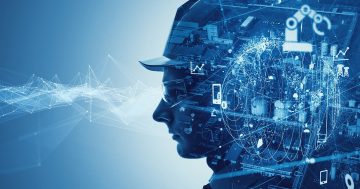Lauren Fitzpatrick Shanks* discusses how to leverage games and AI to maximize cultural intelligence in the workplace.
 U.S. corporations spend $177 billion annually on talent development.
U.S. corporations spend $177 billion annually on talent development.
But with labour competition intensifying amid the Great Resignation, expectations are growing.
Employees are now demanding more diverse opportunities and have become outspoken about what will fuel their motivations and loyalty.
Items of high importance include training and progressive diversity, equity, inclusion, and belonging (DEIB) solutions.
According to PwC, 85 per cent of women and 74 per cent of men seek employers with diversity and inclusion strategies.
But with an abundance of easy-to-access educational content online, how can employers differentiate their talent development offerings to attract, develop and retain the best employees?
Many of today’s top companies are now turning to games and artificial intelligence (AI), which can elevate the human experience and maximize cultural intelligence in the workplace.
Let’s take a look at how this combination works.
Why traditional talent development is no longer enough
In a competitive employment market, the strength of your people is intricately linked to positive business outcomes.
Strategic hiring and deployment of top candidates and retaining them long after they’re onboarded are vital to mitigating risks, meeting goals and objectives, and future-proofing for continued success.
Talent development has long been considered a core strategic initiative to engage and empower a company’s workforce, but now we’re seeing that the old tactics no longer work.
Historically, employers would send their staff off to training courses or have them read popular skill-building or coaching books.
Next, came the annual reviews meant to critique and inspire.
These traditional talent development tools focused on knowledge acquisition used more to enhance a company’s ROI rather than foster employee development.
Today’s workforce still craves intellectual growth, but they’re also demanding more “targeted” employee development opportunities alongside meaningful work.
The Internet has given rise to a plethora of niche solutions including upskilling platforms, learning management systems, and online course providers.
Even a quick browser search for “talent development” provides us with over a billion hits.
The vast amount of educational content now available can overwhelm.
How can an employee choose when there are so many options to choose from?
There’s also the fact that many of us don’t know what we want to learn, let alone what we need to learn.
Often, recommended or mandated content isn’t given in the employee’s preferred learning style or offered at the ideal time to learn, so information isn’t retained as well as it could be.
No matter where the content comes from, it’s important to understand that we can’t (and shouldn’t) separate DEIB from talent development.
DEIB should be inherently integrated into all learning content and experiences.
And we must deliver these development opportunities in a way that allows everyone to be most successful in the workplace.
The importance of instilling DEIB into the workforce
Our definition of DEIB needs to expand beyond the demographics of employees and what categories they represent.
We need to be more intentional, and more human because the goal is to change and improve behaviours.
Unfortunately, when attempting to instill DEIB into the workforce, many organisations rely on methods like lectures, panels, surveys, and pre-recorded videos.
These methods help disseminate information, but they fall short when it comes to changing employee behaviour.
Technology is often used to track participation or the number of diverse hires, but not impact, change, or development in employees’ way of thinking.
What’s missing is real-world recurring experiences that allow humans to self-recognise faults, bias, voids, gaps, and areas of development without feeling like they need to be on the defence.
People require real-life practice to continually develop core skills such as communication, listening, vulnerability, empathy, and compassion.
Behaviours inside the workplace shape the world around us.
After all, 78 per cent of full-time workers spend more time with coworkers than their families.
If we’re able to create more culturally intelligent workplaces, we’ll see a more culturally intelligent and compassionate world leading to fewer people losing their jobs due to their social media posts.
Games + AI = next-generation talent development that works
So, you’re probably thinking, how do we get employees comfortable with becoming more culturally intelligent and able to self recognise the areas where they need development? In one word: games.
Games help us let down our guards.
At the beginning of a game, we all agree to follow the rules.
In the New York Times article Why Do People Love Games? Sam Von Ehren explains how game rules disarm us.
He says, “We adhere to these agreements and rules faithfully, committing to and executing the game with little hesitation.
Game designers call this alternate state of being ‘the magic circle.’ Imagine a circle drawn in chalk on a sidewalk.
When we are inside the chalk, we are ‘playing’ the game.
We’ll only do what the rules of the game allow.
We will try to win.
When the game ends, we leave the circle and return to normal.
The magic circle is what separates a game from reality.”
When playing games, we all start on equal footing.
Each of us has an opportunity to win, and as humans, we all have a desire to win.
Though, some are more competitive than others.
Games are about the luck of the draw.
They allow us to be free while still having an element of control.
Games are also a trigger for learning and growth.
Psychology-based games that emphasize storytelling bring awareness to areas that need development, while AI sources the best educational content to assist employees in achieving their learning goals.
Psychology-based games make it so you don’t have to create or dig for the content, while at the same time challenging your thinking and pushing your abilities.
Randomization, not being able to prepare, and the ambiguity of these web-based games for teams played in person or via video bring out authenticity within players.
Much is revealed about oneself and others during gameplay.
Competitive games that award points based on how open, honest and vulnerable you’re being are helping people self-reflect, recognise where development is needed, improve their interpersonal skills and maximize their cultural intelligence in the workplace.
Learning requires reflection.
We often don’t realise how much we learn when playing until we’ve reflected.
Games help us pinpoint where we can further grow at a specific moment.
Games can help us realise areas where we need development, but what about the training and resources?
As mentioned earlier, content exists, but it’s challenging to sort through and find the right content to meet the right goal.
Today, natural language processing (NLP), a form of AI that gives machines the ability to read and interpret human language, uses gameplay outcomes to deliver the perfect content for your learning style directly to you.
You no longer have to search through millions of courses.
You can connect to any training content database and be given the perfect content without a single search.
Technology enables us to track and measure the impact psychology-based games have on individuals and groups.
We can use games to collect impact data in some of the most difficult to measure areas, including cultural intelligence, engagement, team dynamics, innovation, and job satisfaction.
This data can be analysed at the industry, company, and all the way down to the function team level.
Impact is important, and a desire to learn and grow is needed to create impact.
We must invoke joy, play, and humanity into our technical workplace solutions to see the positive impact and behavioural changes we desire to see.
The combination of games and AI provide both.
*Lauren Fitzpatrick Shanks is CEO of KeepWOL.
This article first appeared at venturebeat.com.











